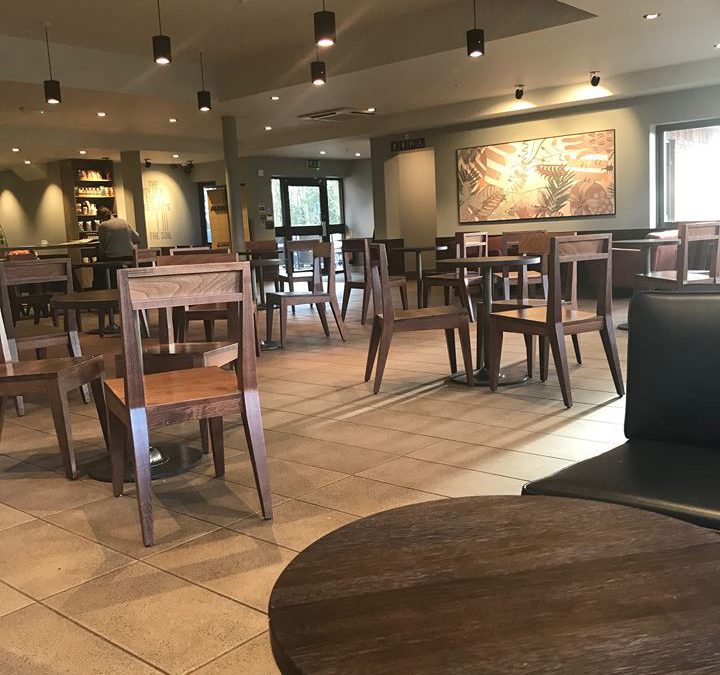All businesses and organisations have been facing significant challenges since the advent of COVID 19 with travel restrictions, supply-chain disruption, government-imposed lockdowns and suppressed demand for their goods and services. Different sectors are faring better than others, with leisure, travel and hospitality virtually shutting down while essential industries such as supermarkets doing comparatively well.
For many businesses, already teetering on the edge, the economic shutdown and the almost certain upcoming recession will prove terminal. However, many perfectly viable and sustainable businesses during normal times may have to take drastic action to stave off the administrators.
Property invariably comprises a significant part of an organisation’s outgoings and they will be considering ways to mitigate business disruption in the short-term and look at a longer-term strategy to adapt to the changing market.
Below is a brief look at the challenges facing occupiers and the short-term tactics to mitigate those issues as well as a longer-term view of the property market.
Short-term Survival
The immediate and most distressing impact of the pandemic is the sudden stop of much of the economy and forced cessation of many business activities, leaving many businesses unable to trade and raise the income to pay staff and suppliers. When extrapolated across the economy it is anticipated that the economy will shrink 35%, unheard of previously.
Businesses that are still trading are suffering considerably from supply chain disruption and particularly from imported goods, and seeing business slow down as their customers conserve cash. This has led to many rapidly changing their business models to reflect a changed market.
Although the restrictions are slowly easing, the unknown length of this crisis with the likely recessionary impact and radically altered fiscal landscape makes planning for the future difficult. However, the immediate considerations for business tenants will include:
Rent Holidays/ Deferrals
Even with employee furlough schemes, grants and business rates holidays if there is no income then there is nothing to pay rent with. While it is unlikely that the lease has any specific provisions allowing for rent deferrals or holidays, many landlords would be reluctant to lose, what would otherwise be a good tenant, and see their medium-term income fall along with the capital value of their asset.
Pragmatic landlords’ reluctance to lose tenants would make them open to discussing support measures with their tenants, but it is important for the tenant to be able to assess the landlord’s position and ability to strike a deal.
Exiting Current Lease
Some occupiers that have reached or approaching the end of their lease term may wish to serve notice and vacate the property, with a view to moving to new premises. Moving premises can be a costly and disruptive process but outgoing tenants should be mindful of their dilapidations liability that will be realised by terminating the lease.
Dilapidations are essentially the works that an out-going tenant will need to undertake which typically include reinstatement of any fit-out and alterations back to the original condition, remedying any disrepairs and redecorating the premises. Failure to do so can result in a claim from the landlord for the costs of those works and consequential losses such as loss of rent for the time taken to put the property back into the condition required by the lease.
If an occupier is looking to exercise a break clause, they should be mindful of conditions attached to that break including ensuring that there are no outstanding dilapidations on the break date and the tenant is not in any other breach of the lease, such as failure to pay all rent up to date.
Assignment or Sub-Letting
If an occupier is mid-term does not want to negotiate an early determination of the lease, they can consider assigning or sub-letting all or part of the property. This will require the tenant to find their own sub-tenant or assignee and have the landlord agree to them. In the case of assigning or sub-letting part of the property, the tenant may have to carry out alterations to divide the space as necessary, with the landlord’s approval and ultimately reinstate at the end of the lease term.
Opportunities in the Longer Term
Many occupiers will be considering longer-term property restructuring which may include:
Acceleration of the Remote Working Trend
Which in turn reduces the amount of space required and possibly allow an occupier to rent property on a more flexible and adaptable basis.
Mitigation of future supply chain disruption
Increasing stockpiling of goods and components with less reliance on the “just in time” model, which could be attained by expanding existing premises or acquiring additional warehouse/ storage units.
Relocating to better-value premises
The crisis has led to a record amount of commercial property returning to the leasing market as businesses either rapidly downsize or go into administration. This will provide a great opportunity for some occupiers to relocate to new premises better reflecting their business requirements and on more advantageous terms.
Refocus Online
While ecommerce is not a new concept, we expect retailers to accelerate the ongoing transition from the high street to online with the resulting shrinking of their physical presence and demand on to warehousing and fulfilment centres.
Modification and Enhancement of existing premises
This could be driven by a number of factors such as the realignment of operational conditions and processes, need to hold more stock, changes in workplace habits or consumer needs. Organisations with deeper reserves may also use this down time to undertake significant refurbishment or capital projects and taking advantage of a potentially depressed construction market.
If you feel these services would benefit you or your organisation, please contact us or call on 0207 947 4 947 or 01638 596 241.

